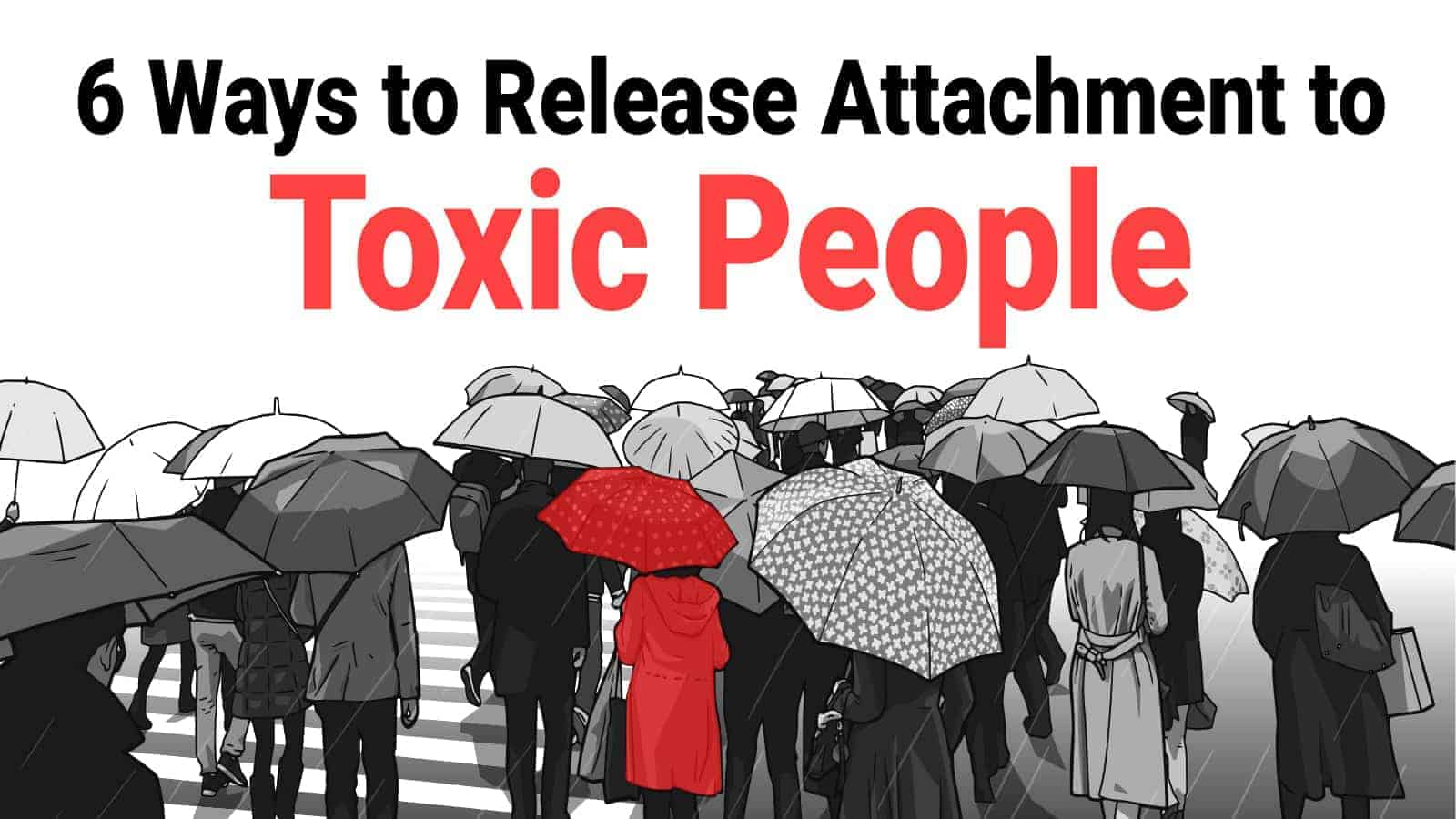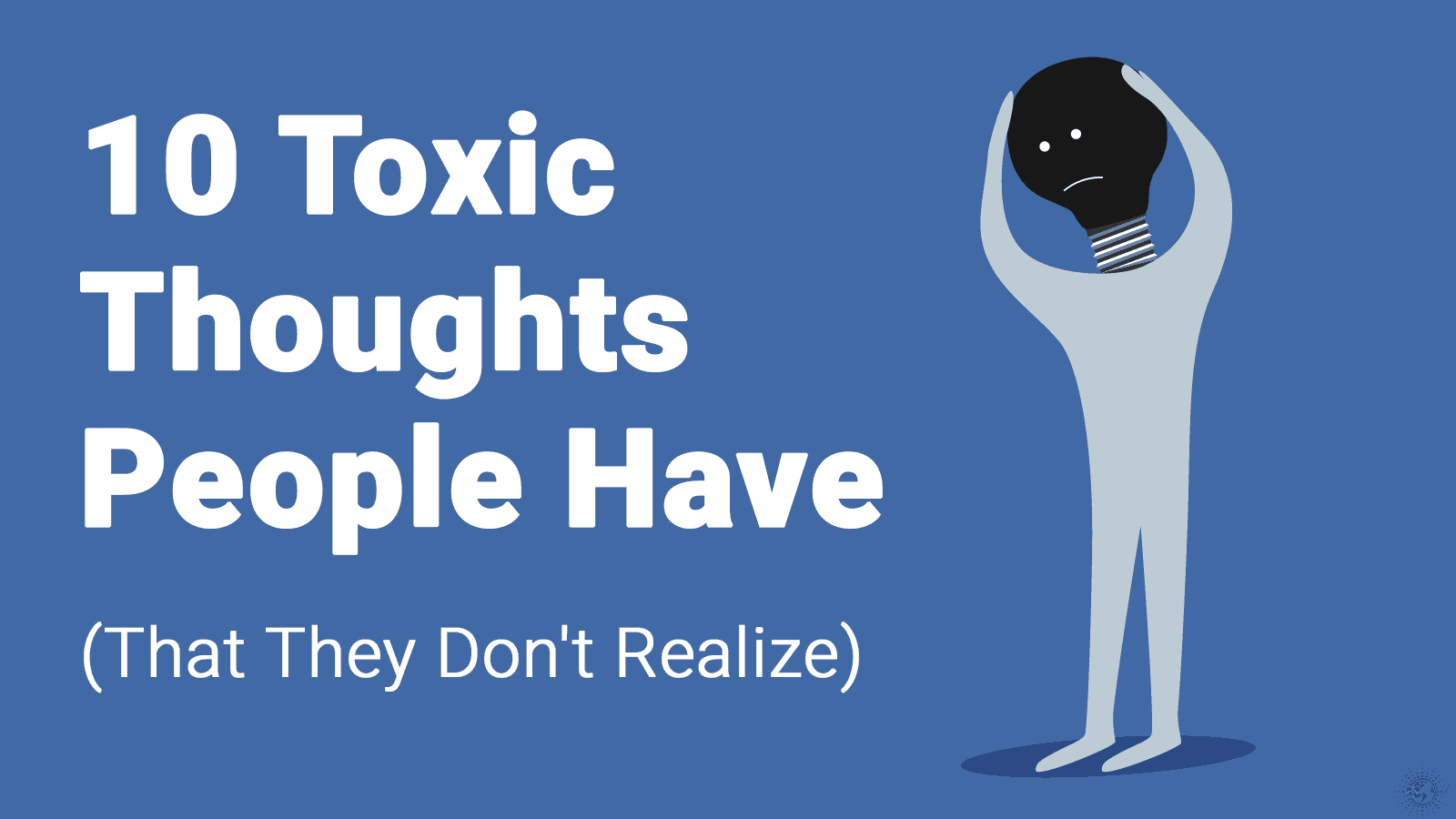We become attached to many things in life. But not all of these things are good for us. This is why non-attachment is a crucial concept. Many people make the mistake of believing that a state of non-attachment is being emotionless and closed off, but this is far from the case–that’s often where toxic people start.
Instead, non-attachment refers to the releasing of negative thoughts and emotional issues that, when you become attached to them, can cause turmoil and toxicity. It can also mean letting go of toxic people and relationships in such a way that leaves you feeling free and positive.
Non-attachment provides peace, positive thinking, and joy to one’s life when done correctly. The problem is that it can be difficult to start on this spiritual journey, especially if you have to let go of people you’ve become used to having in your life, even if they have been creating toxicity.
This is a difficult journey that can be frightening, but its end results are worth the uphill climb. You will be amazed at how much calmer and happy you feel!
Here Are 6 Ways To Release Attachment To Toxic People
1. Be Kind And Understand Interdependence
Compassion is key to healthy non-attachment, and it’s about kindness to yourself as well as to others. This allows you to desire an end to pain, suffering, and trouble, both for you and the toxic people in your life. This allows you to be gentler to yourself, so you understand that you do not deserve toxicity and begin to melt the attachments that present that problem.
At the same time, this kindness allows you to wish the people you leave behind good things in their lives. You understand that you can live without them, and they without you, and your love for them and desire for their happiness outweighs your attachment to them. This makes it easier for you to let them go and move on, and it also often results in you being the bigger person.
This concept of compassion in non-attachment is rooted in the idea of interdependence. This means that you want happiness and less suffering for everyone because you are able to see that you are all linked through negativity and your quest for a better life. You will then understand that you are all connected – and as such, your desire for physical, forced attachment will dissipate.
- If you have trouble with this concept, try to distract yourself as you work on it.
- Move your focus onto others instead of yourself, and project this compassion outwards.
- Volunteer at a non-profit organization, help someone through a difficult time, or donate to charities and spread love all around you.
2. Focus On Yourself and Your Journey
If you’ve been around a toxic person and spend a lot of time with them, you know how much of your energy winds up being devoted to meeting their every whim. This means you often end up neglecting yourself just trying to appease them. That’s why it’s so important to release attachment to toxic people.
One way you can do so is by shifting your focus away from others and onto yourself. Contrary to what you may believe, self-focus isn’t necessarily selfish. You should be your own top priority, and the concept of loving yourself first before anyone else has a lot of merit to it. Toxic people drain your energy, and you must focus on yourself to restore it.
This isn’t just about making healthy habits and physically taking care of yourself (which you should definitely do). It’s about looking inward and asking yourself what you want.
- What are your goals, hopes, and dreams?
- How do you want to feel?
- What do you want to devote yourself to?
- How can you achieve these aspirations?
Another question that you can pose to yourself regularly is simply to say “How are you?” Love yourself enough to want the best for your wellbeing. This can help motivate you to make positive changes in your life and cut off those who drag you down.
3. Accept And Allow
Attachment often means wanting things to change. You want a toxic person to become better and treat you how you so desperately want to be treated. But the fact is that this isn’t going to happen – you need to accept that.
In general, non-attachment is very rooted in acceptance. This doesn’t mean you don’t feel passionate about current issues or that you don’t want the world to be a better place. It just means that you are at peace in your current moment and are able to accept who you are, what the world is, and who other people are. This gives you a clear head to think about the next step.
In the process, shed your use of phrases like “should have,” “could have,” and “what if.” Put aside ideas of “must” and “or else.” Instead, believe in yourself and believe in others. The person who hurt you could have been better, and they should have treated you well – but they didn’t, and you have to learn to live with that so you can move on.
- Most important, allow life to be the way that it is.
- Allow your emotions and thoughts to flow.
- Allow things to go wrong even when you try your best.
- Resisting life and its natural changes will do you no good.
- Allow things to go right when you try your best.
- Allow yourself to be happy, to move on, and to live life in the best way you know how.
4. Embrace Healthy Habits and Routines
After cutting ties with a toxic person, you may still have an attachment to them even if you no longer contact them. How is this possible? Well, your mind still may be on them. You might have difficulty moving on, feel upset or sad at their absence, or be on an emotional roller coaster due to the troubles involved in cutting them off.
Falling into a regular routine of sorts can help the body and mind the heal and recover. There’s no better time to try adopting healthier habits and using them as a “distraction” while you work to move on. Soon, you’ll find they aren’t a distraction anymore – they’re things you genuinely enjoy doing.
Routines improve overall health, boost positive thinking, and help with stress management. Adding self-care habits to your daily routine is a great way to help yourself in more ways than one. Here are some great ideas for positive habits that you can add to your routine.
- Eating a balanced diet
- Exercising
- Reading
- Learning to play an instrument
- Cooking
- Drawing
- Writing
- Homemade self-care routines
- Taking up a new hobby
Keeping yourself busy will keep your mind off of toxic people, helping you to release your attachment to them more quickly.
5. Reflect On Lessons and Emotions
Self-reflection and critical thinking are crucial in positive personal growth and learning, and it’s a great way to realize toxic relationships and free yourself from them. This is why it’s so important to learn to make observations on your emotions, thought processes, and actions.
Analyze your relationships and the toxic people you’ve had to release your attachment from, and look for lessons you’ve learned from them that will help you as you move forward. This can help you feel at peace with failed relationships with others, as you have emerged a better person from them.
The more you practice thought-awareness, the easier it will be for you to let go of past relationships and stay focused on the now. This will also allow you to process the emotions that led to your attachment so you can grow from them and understand them. It is extremely easy to elect to ignore issues and problems, but bottling up thoughts and feelings is simply not healthy and can cause you to cling to toxicity.
- Admit your errors, understand the reasons behind them, and find ways to break the cycle.
- Take note of your emotions, how you reacted to them, and how your actions were influenced by them.
- Finally, recall which of your needs and desires were ignored or denied with this toxic person, and realize that the person in question wasn’t doing anything good for you.
6. Expand Your Mind And Hope For The Future
Many of us are born with an open mind that becomes narrower and more jaded over time. Expanding your mind and keeping it open and big-picture-focused is crucial to positive thinking and a happier life overall.
The mind is capable of amazing things, and, when wide open, it can see infinite possibilities, goals, and dreams. Think of healing. Reflect on good friends and relationships. Think of the amazing things that await you at the other end of your trials.
One thing to keep in mind is that everything around you is transient. Nothing lasts forever, and many things are temporary, which is why change is such an important part of life. A toxic person was in your life to teach you valuable lessons, and now is the time to enact change and cut them loose.
The idea that nothing is permanent can be a scary and saddening one, but it is the truth, and it reminds us of the importance of living life to the fullest and with those who make us happy. A negative, toxic person will bring you down and stop you from achieving the joy you can find in life.
This can also help you to stop focusing so much on external things, as many of them will not last for your entire lifetime. It’s good to have external things that make you happy and that you love, but know that creating internal peace and joy is far more important and will make you much happier. It’s also a great way to challenge yourself to embrace uncertainty.
- When you’ve been around someone toxic, you may be reluctant to try and open your heart to others again.
- But uncertainty is part and parcel of life and resisting it only causes stress and isolation.
- Instead, learn to be non-attached, instead loving and appreciating the people around you through your natural connection with them.
Final Thoughts On Ways To Release Attachment To Toxic People
Non-attachment, especially to people, takes practice, but it’s worth it. It allows for a sense of freedom, an ability to go with the flow, and lots more positive thinking. Better yet, it allows you to free up space in your life for healthier relationships with others.
When you master healthy non-attachment, you will become like water – adaptable, effortless, and peaceful in your journeys. You will be comfortable taking different shapes when the need arises, yet remain confident in who you are at your core. By releasing attachment to toxic people, you will take your first step in this direction of mental and spiritual positivity.


















